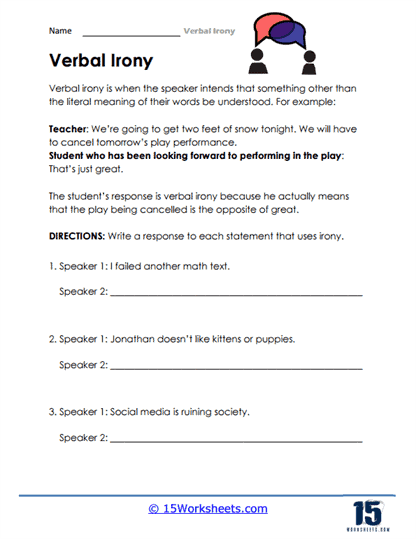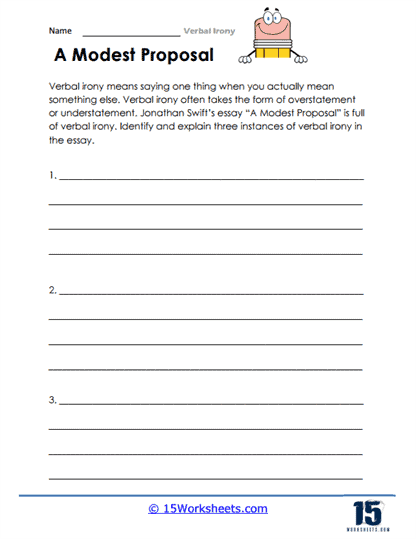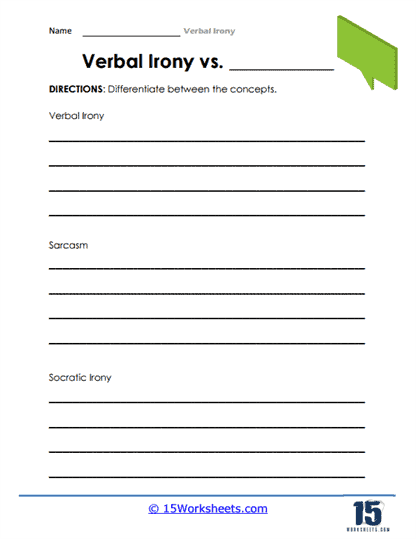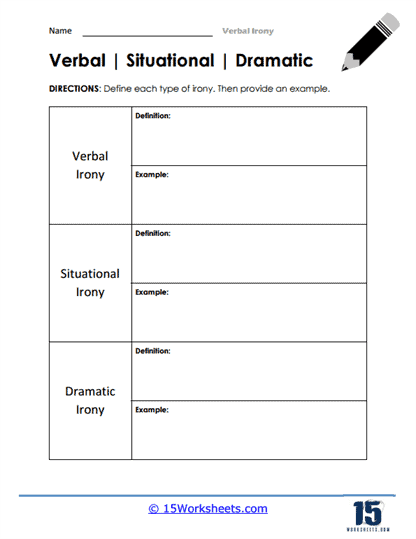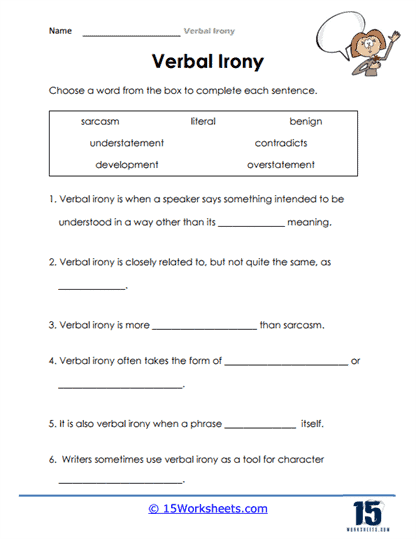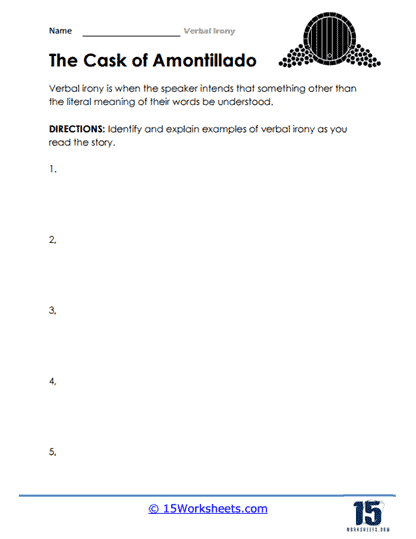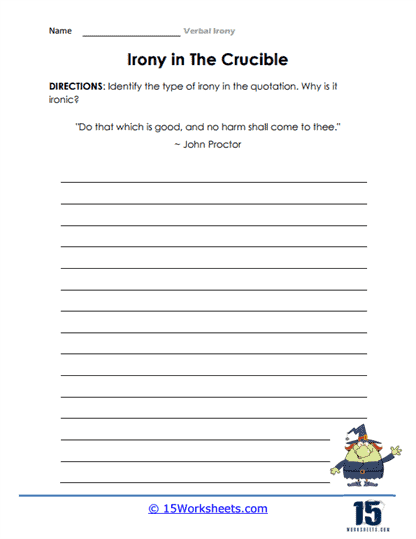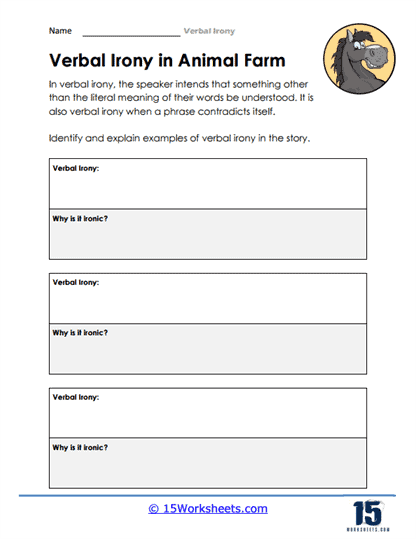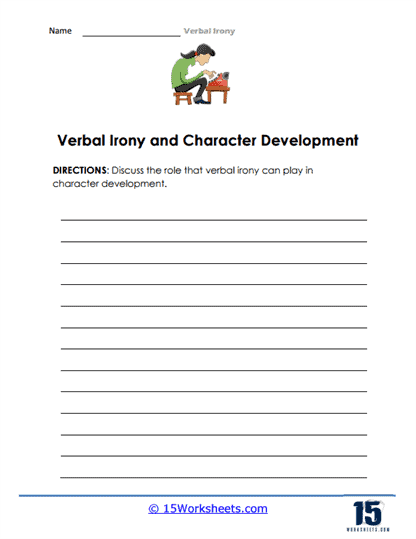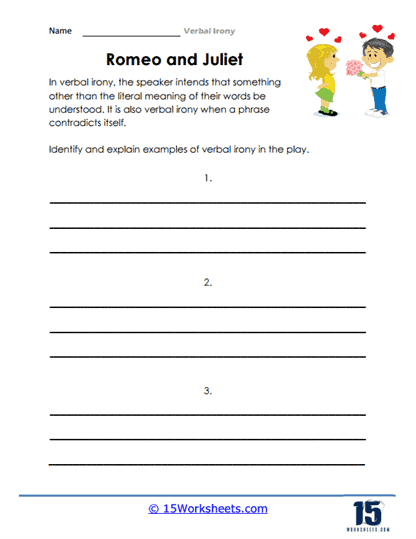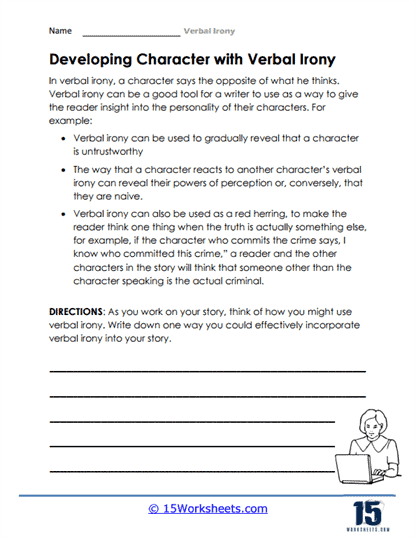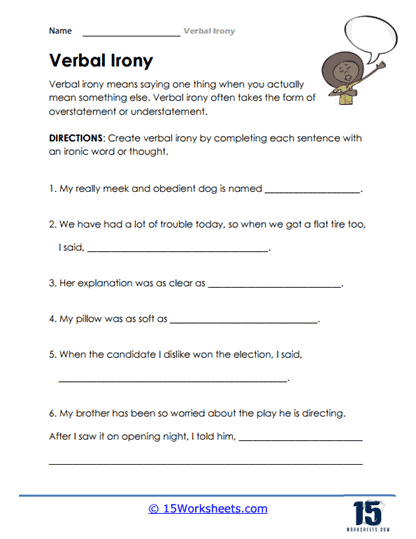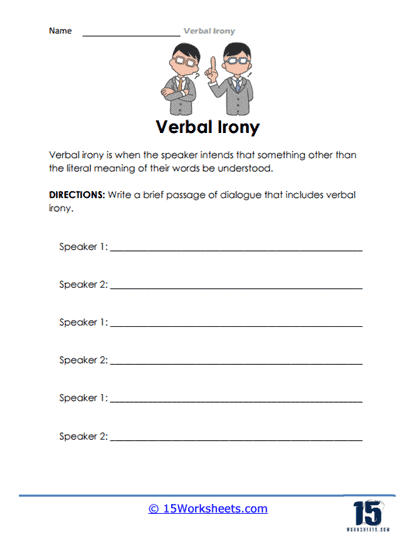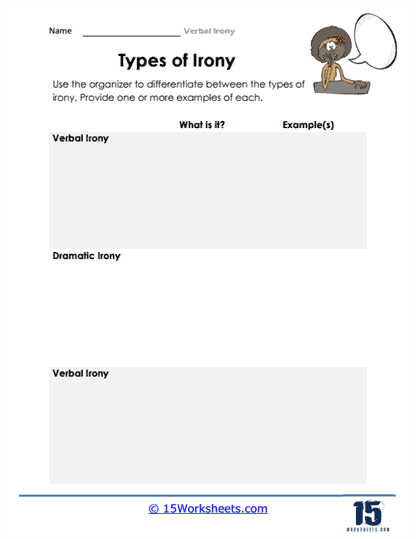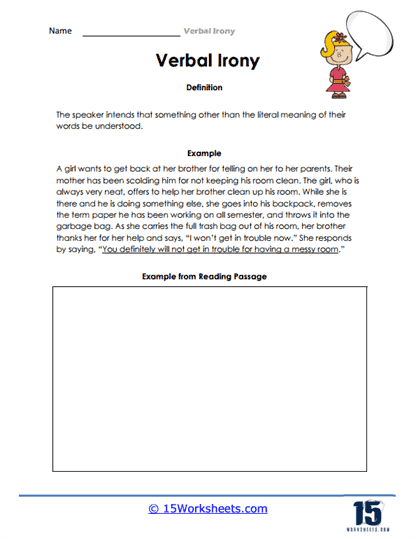Verbal Irony Worksheets
All About These 15 Worksheets
Verbal irony, the use of words to convey a meaning that is opposite to their literal meaning, is a subtle and powerful form of expression that enriches language and communication. Understanding verbal irony is not only important for mastering language nuances but also for developing critical thinking, effective communication skills, and cultural awareness. This collection of 15 worksheets is designed to introduce students to the world of verbal irony, helping them grasp the importance of this linguistic technique, recognize its various forms, and cultivate their own language mastery.
What Are Verbal Irony Worksheets?
These worksheets are designed to help students understand the concept of verbal irony, which is a form of irony where what is said is the opposite of what is meant. It’s when someone says something that is different from what they actually mean, often for humorous or emphatic effect. Verbal irony is common in everyday conversation and is often used in literature to create more complex characters and situations.
These worksheets help students begin to understand how verbal irony can improve their comprehension and appreciation of different texts and help them to better understand complex language use in everyday conversation. They also enhance their child’s language skills, encourage critical thinking, and foster an appreciation for literary devices used in books, movies, and plays. They help in building a child’s ability to understand subtlety and humor in language, which is an essential part of effective communication.
The types of exercises will see on these worksheets include:
Identification – The student would read sentences or short passages and identify which ones contain examples of verbal irony. This would involve determining whether the words used in a sentence express something contrary to truth or someone’s actual feelings.
Creation – The student might be asked to create their own sentences or short stories that use verbal irony, helping them to understand how it can be used effectively in communication.
Interpretation and Comparisons – These exercises would involve reading longer text passages and explaining why certain examples are considered verbal irony. This not only tests comprehension but also challenges the student to think more deeply about the author’s intent and the context in which the irony is used. Students could be given pairs of sentences and asked to explain how the use of verbal irony changes the meaning or tone of the statement.
Remember, the key to understanding verbal irony is recognizing the difference between what is being said and what is meant. These exercises aim to develop that skill.
Why Do Authors Use Verbal Irony As a Literary Device?
Verbal irony is a powerful literary device that authors and speakers employ to convey something different from, and often opposite to, their literal meaning. It is one of the several forms of irony that exist in literature and communication, alongside dramatic irony and situational irony. By using verbal irony, an author can express complexity, critique, and humor, providing readers with a deeper understanding of the characters and the context in which they exist.
The defining feature of verbal irony is its contradictory nature – it occurs when the words spoken or written convey a meaning that is the opposite of their literal definition or the reality of the situation. This type of irony often relies on the reader’s or listener’s knowledge and understanding to decipher the underlying meaning.
Examples of Verbal Irony in Literature
“Romeo and Juliet” by William Shakespeare
Verbal irony is commonly used in plays by William Shakespeare. In “Romeo and Juliet,” when Juliet speaks to her mother, she uses verbal irony. She says, “Indeed, I never shall be satisfied with Romeo till I behold him—dead.” Juliet’s mother believes that Juliet wishes to see Romeo dead because he killed Tybalt. However, the readers know that Juliet actually means that she won’t be satisfied until she sees Romeo (her husband), from whom she has been separated and she’s distressed thinking about his banishment, not his death.
“Pride and Prejudice” by Jane Austen
In Austen’s “Pride and Prejudice,” Mr. Bennet employs verbal irony upon hearing that Mr. Bingley is set to arrive in town – “For what do we live, but to make sport for our neighbors, and laugh at them in our turn?” Mr. Bennet’s ironic remark underlines his cynical view of the social expectations of his time. While he outwardly conforms to society’s conventions, his ironic statements allow Austen to subtly criticize societal norms and expectations.
“Animal Farm” by George Orwell
Orwell’s “Animal Farm” is a masterclass in the use of irony, including verbal irony. For instance, after the pigs become the tyrannical rulers of the farm, they change the Seven Commandments of Animalism to suit their needs. One of the most notable alterations is the commandment “All animals are equal” which later becomes “All animals are equal, but some animals are more equal than others.” This statement is verbally ironic because, by definition, ‘equal’ means ‘the same,’ so being ‘more equal’ is contradictory and impossible. This highlights the pigs’ manipulation of language to justify their abuse of power.
Benefits Of Verbal Irony Worksheets To Students
Exploring the world of verbal irony through this collection of 15 worksheets offers students an opportunity to develop essential skills in language proficiency, critical thinking, effective communication, and cultural awareness. Verbal irony is a linguistic device that invites students to decode layers of meaning and engage with language nuances.
By engaging with these exercises and activities, students not only enhance their academic abilities but also gain valuable tools for precise and nuanced communication, cultural sensitivity, and an understanding of the role of language in shaping interpersonal relationships and societal norms. The benefits of studying verbal irony extend far beyond the classroom, empowering students to be more effective and culturally aware communicators in an increasingly diverse and interconnected world.

